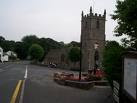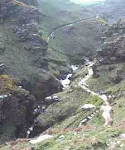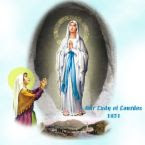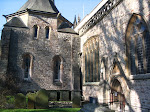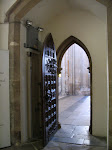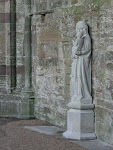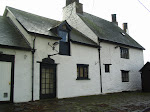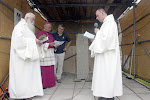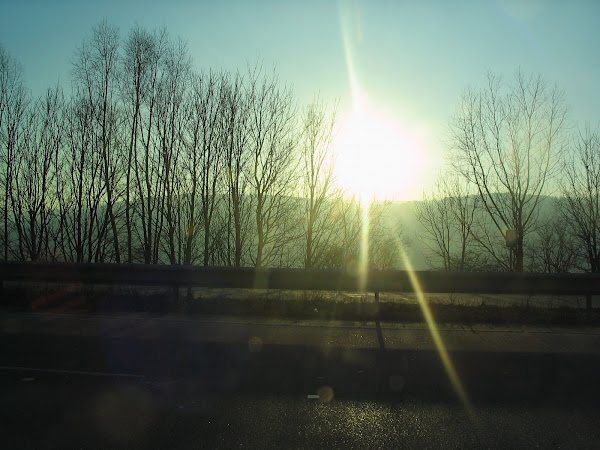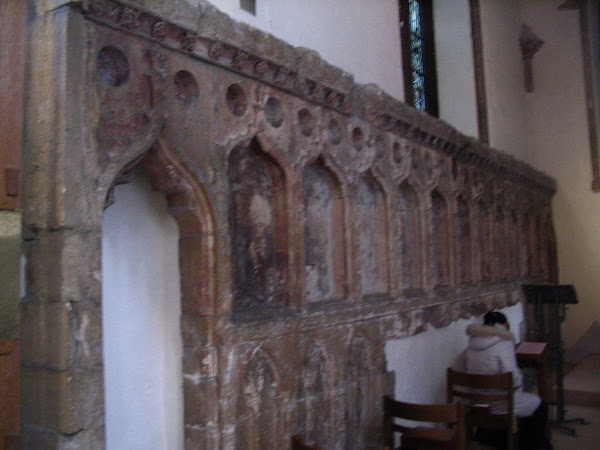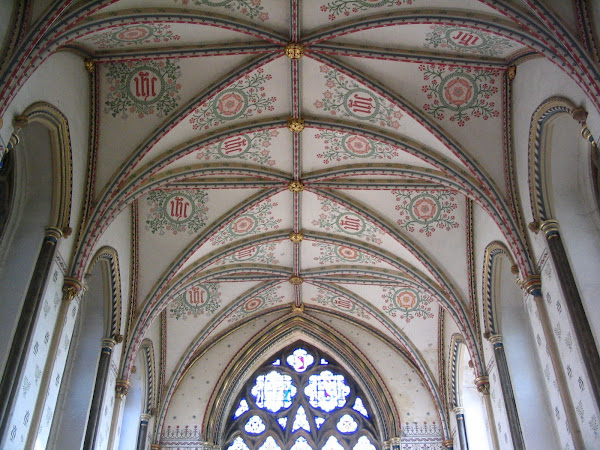
















St Clether was one of the twenty our children of Brychan, along with Finbarr who also worked in Cornwall.This monastery was only a short way away from his sister';s at St Keyne.The hamlet where this was still situated is well worth a visit. The parish church itself was built in Norman times and the Vicarage obviously built after the Church was used by the Anglicans in the 16th century. The ancient well was rebuilt and repaired in Norman times and the well carefully conserved.
Firstly we went to visit the Norman age built church which leads over the fields for half a mile. St Clether is South of Bodmin.We drove up on a windy day, and there was much of interest in the church, which had had a refurbishment recently, and the piscina and stoup had been removed at some time. The area where St Clether had lived and worked among the people , healing, praying and clothing the naked, feeding the hungry was set well apart from the church, which is nearer the small road leading through the village. Clether seems to have established his monastic cell here on the river Inny. It is north of Altarnan, though not accessible through very wet weather as the road floods. It can be reached from the main Bodmin-Liskeard road, however.
The parish church is mediaeval, but very few original features remain and it has more in keeping with the 18th century charming rectory over the road.The Well at St Clether has a chapel, however which is more ancient than the church. It needs money at the moment for repairs, so anything you can send would help. St Clether designed his chapel well, so that the water from the well flowed beneath the altar of the church. At some point he went to live and died at St Cleer (possibly in old age and infirmity) and his relics were put beneath the altar over the running spring.
St Clether's Feast Day is on November 4th.
The well would have been sought for healing by many people and as the Normans did not demolish it and put up a church elsewhere, it was probably far more colourful in those early years, with wall paintings and such.Candles are available for lighting at St Clether's well, to ask for St Clether's help in prayer to the Father for healing.
A STRANGE OCCURANCE
The distance to get to the well, clearly marked by oak markers was too great a distance and I sent my husband to photograph the well and chapel. My knee has an injury at the moment. He returned quite excited. He had photographed the well and chapel and had snapped the inside of the chapel the minute he walked in. With his naked eye he could see nothing at all, yet on the digital camera screen he saw a white shape. Now he is sceptical of many things but the white shape, as you can see above was clearly visible, apparently 'fleeing' into the stones. Five seconds later he snapped again and it had gone. If you look carefully, you can see plainly that the window is lower than the white shape. He said he was not afraid, so perhaps the camera recorded an angel guarding the place,we did not know. But it would be great to hear any explanations?
The Well itself is slightly higher than the chuch, through which the spring flows.
It was certainly worth a visit and needs repair money so if you have a spare fiver...
Will post more on St Clethers when I have time.
MADELEINE MCCANN
There has been no informatin on here whereabouts, yet I absolutely have a hunch she will be found one day soon and will continue to pray for her and her family.
There is a Mary in Monmouth Page on Facebook .
LLANFAIR DISCOED CHURCH
Following the recent blog on this church and its connection to Lady Margaret Pole, Countess of Salisbury and her son Cardinal Reginald Pole, both martyred for the Faith in Tudor times, I was contacted by some descendants of the Pole Family in Hampshire and we have become friends.They are still Catholic and help with the National Catholic Library in Farnborough. So that has been a blessing for me.




















